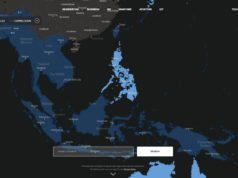The Start of a Warmer Season in the Philippines Amidst Lingering El Niño Effects

The Philippines is bracing for the onset of its warm and dry season of 2024, anticipating rising temperatures amidst the ongoing influence of the El Niño phenomenon. The announcement came from the Philippine Atmospheric, Geophysical, and Astronomical Services Administration (PAGASA) during a briefing on March 22, signaling the transition into what locals often refer to as “summer.” It’s important to note that the Philippines experiences two primary seasons, the rainy and the dry, with the latter further categorized into cool and warm phases.
The shift from the cool, dry season, marked by the northeast monsoon or “amihan,” which spans from October of the previous year to March, signifies the end of cooler temperatures. The cessation of the high pressure area over Siberia weakens the amihan, paving the way for the North Pacific High to strengthen. This transition leads to a shift in wind patterns from northeasterly to easterly and a noticeable rise in temperatures across the nation, heralding the warm and dry season’s arrival.
This period, expected to last until May, will see temperatures climbing, with PAGASA providing daily updates on the heat index. Despite the overall increase in warmth and dryness, sporadic thunderstorms may still occur, typically during the late afternoons or evenings.
The Philippines is currently experiencing the effects of El Niño, which began in the tropical Pacific around June of the previous year and has evolved from a weak to a strong phase. Although PAGASA indicated on March 7 that El Niño is on a weakening trend, with a return to neutral conditions anticipated by the April-May-June quarter of 2024, its impacts are expected to persist through May.
El Niño’s presence has led to drought conditions in at least 37 locations, dry spells in 22, and general dryness in 12 areas as reported up to March 17. The country continues to face reduced rainfall, which could have adverse effects across various climate-sensitive sectors including water resources, agriculture, energy, health, public safety, and more.
The agriculture sector has been particularly hit hard, with damages in eight regions estimated at P1.75 billion as of March 14, affecting over 29,000 farmers. This ongoing climatic event underscores the urgent need for adaptive measures to mitigate the impacts of such extreme weather conditions on the nation’s critical sectors.











